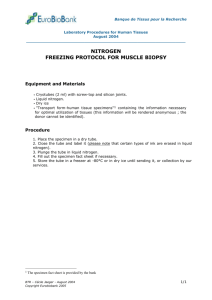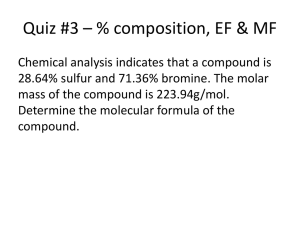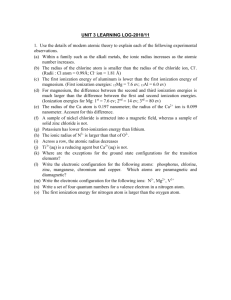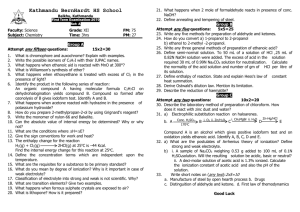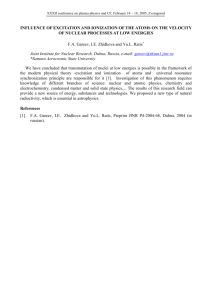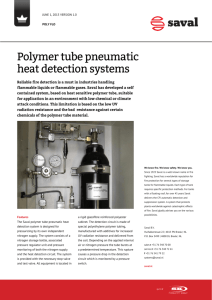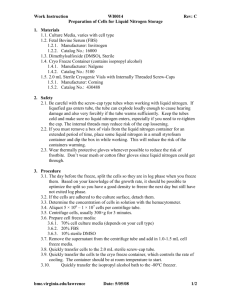Open Ended Problems
advertisement
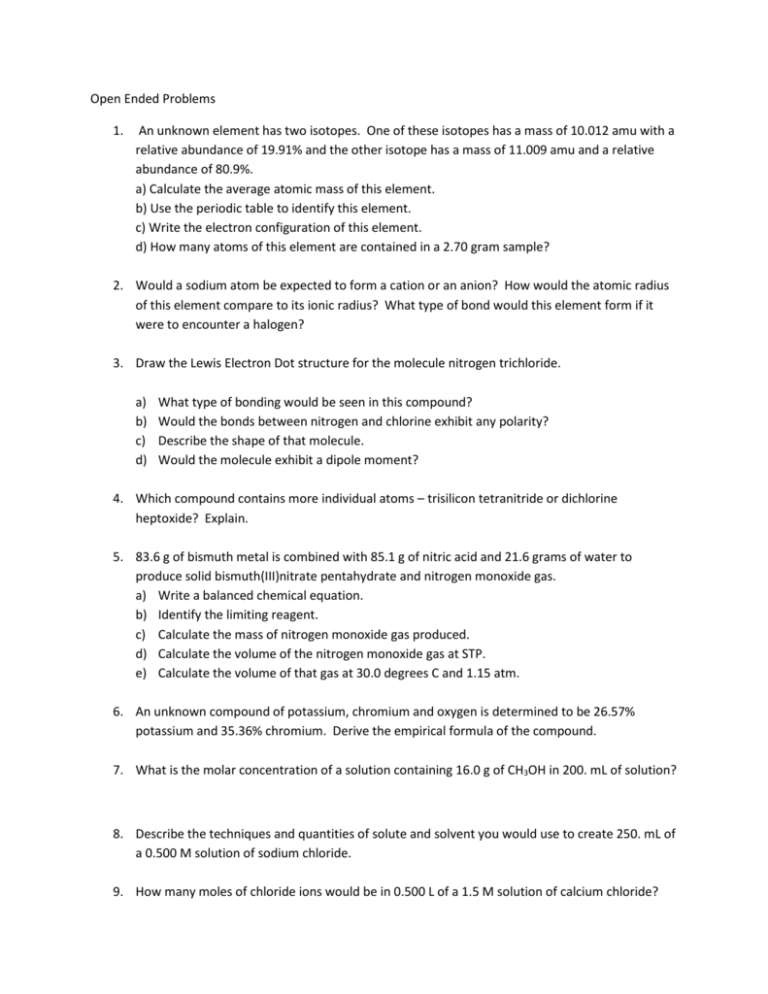
Open Ended Problems 1. An unknown element has two isotopes. One of these isotopes has a mass of 10.012 amu with a relative abundance of 19.91% and the other isotope has a mass of 11.009 amu and a relative abundance of 80.9%. a) Calculate the average atomic mass of this element. b) Use the periodic table to identify this element. c) Write the electron configuration of this element. d) How many atoms of this element are contained in a 2.70 gram sample? 2. Would a sodium atom be expected to form a cation or an anion? How would the atomic radius of this element compare to its ionic radius? What type of bond would this element form if it were to encounter a halogen? 3. Draw the Lewis Electron Dot structure for the molecule nitrogen trichloride. a) b) c) d) What type of bonding would be seen in this compound? Would the bonds between nitrogen and chlorine exhibit any polarity? Describe the shape of that molecule. Would the molecule exhibit a dipole moment? 4. Which compound contains more individual atoms – trisilicon tetranitride or dichlorine heptoxide? Explain. 5. 83.6 g of bismuth metal is combined with 85.1 g of nitric acid and 21.6 grams of water to produce solid bismuth(III)nitrate pentahydrate and nitrogen monoxide gas. a) Write a balanced chemical equation. b) Identify the limiting reagent. c) Calculate the mass of nitrogen monoxide gas produced. d) Calculate the volume of the nitrogen monoxide gas at STP. e) Calculate the volume of that gas at 30.0 degrees C and 1.15 atm. 6. An unknown compound of potassium, chromium and oxygen is determined to be 26.57% potassium and 35.36% chromium. Derive the empirical formula of the compound. 7. What is the molar concentration of a solution containing 16.0 g of CH3OH in 200. mL of solution? 8. Describe the techniques and quantities of solute and solvent you would use to create 250. mL of a 0.500 M solution of sodium chloride. 9. How many moles of chloride ions would be in 0.500 L of a 1.5 M solution of calcium chloride? 10. A 12.6 mL sample of hydrogen gas is collected in a eudiometer tube by water displacement at 20.0 degrees C. The position of the eudiometer tube is adjusted so that the height of the water inside the tube is equal to that of the water surface in the trough in which the tube was placed. The atmospheric pressure in the laboratory at the time of collection is 761 mmHg. What is the pressure of the hydrogen gas in the tube? How many grams of hydrogen gas are in the tube? Hint: Remember that you must look up the vapor pressure of water at the given temperature and incorporate that into your calculations. 11. Examine this list of first ionization energies (in kJ/mol) for the following elements: Li 520 Na 496 K 419 a) Explain the trend seen in these ionization energies. Don’t just say: “ As you go lower on the periodic table ionization energy decreases.” Explain why it decreases. b) Explain why the second ionization energies of each of these elements is approximately 3 times the amount of the first ionization energy.
